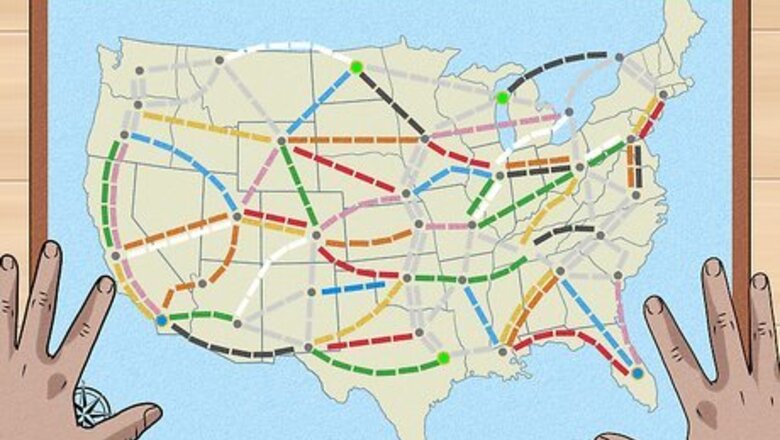
views
Setup
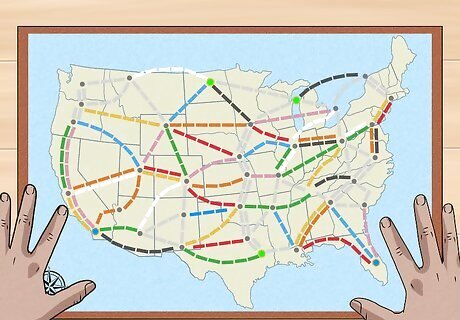
Place the Ticket to Ride board map on a table. Unfold the official Ticket to Ride board map. Place it on a table or other flat surface that has plenty of room for other players to play and for you to place cards and game pieces around it. You must use the official board map in order to play the game. Ticket to Ride can be played with 2-5 people.

Pass out a set of 45 Colored Train Cars to each player. Ask each person to choose a color between blue, red, green, yellow, and black. Then, have them take the set of corresponding Train Cars. Each set should have 45 total cars plus a few extra in case some get lost. Remove the extra cars so each player has exactly 45.
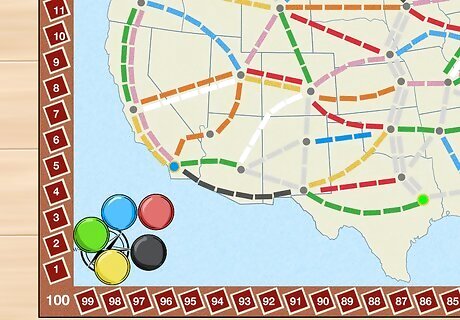
Put each player’s scoring marker in the lower left corner of the board. In addition to the Train Cars, each player has a small, round scoring marker the same color as their Train Cars. Place each player’s scoring marker at the starting point on the bottom left hand corner of the board. Every player starts the game with 0 points and uses the marker to help keep track during the game.

Shuffle the Train Car cards and deal out 4 to each player. Take the deck of Train Car cards and keep them face up. Shuffle the deck really well and then pass out 4 cards to each player, keeping them face down so the other players can see them.
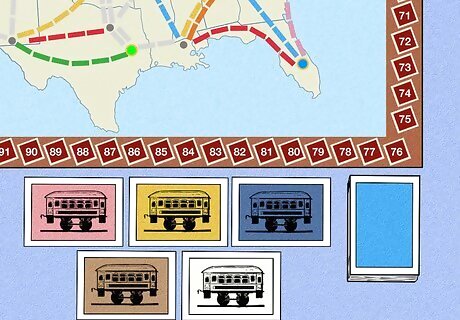
Stack the leftover Train Car cards in the center and flip 5 cards face-up. Take the first 5 cards from the top of the deck and place them face up next to the board. Then, set the deck of remaining Train Car cards face down next to the board. You’ll draw from the cards during the game so they need to be easily reachable for all of the players. The players are allowed to look at their Train Car cards as soon as they get them.
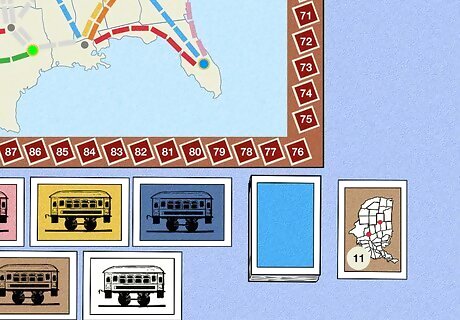
Place the Continuous Path bonus card face up next to the board. There’s only 1 bonus card and it isn’t handed out until the game is over. Set it face up next to the board so you can easily find it whenever the game ends.

Shuffle and deal 3 Destination Ticket cards to each player. Take the deck of Destination Tickets and shuffle it really well they’re mixed up in random order and aren’t as likely to have 2 adjacent cities in a pair of cards. Pass out 3 total cards to each player face down. The players can look at their destination cards whenever they receive them.
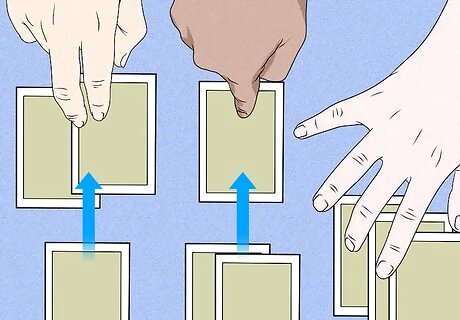
Allow each player to choose which Destination Tickets they want to keep. Each player must keep at least 2 cards, but they can also choose to keep all 3. Place any unwanted cards back into the deck and place the deck off to the side of the board. Keep your destination cards secret during the game. You’re now ready to begin a game!
Actions
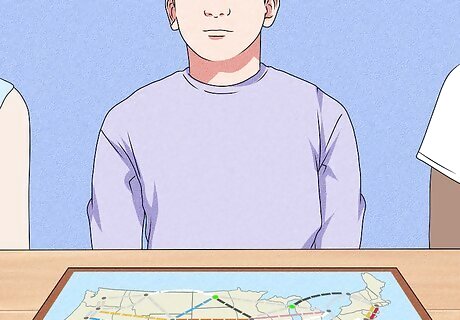
Get the most experienced player to go first. Ask the players which person has played the game the most. Allow them to go first and then the play will proceed clockwise around the board. If you aren’t sure who the most experienced player is, no worries. Just have the oldest player or someone who feels comfortable going first get things started.

Perform 1 of 3 possible actions during your turn. Each player can choose 1 potential action each turn. When they choose their action, their turn is over and passes to the person on their left. The three actions are: Draw Train Car cards Claim a Route Draw Destination Ticket cards

Draw 2 Train Car cards from the deck or the face up cards. If you choose to draw Train Car cards, you can take them from the face up cards next to the board, or from the top of the deck (called a blind draw). Whichever you decide, take 2 total cards and end your turn. If you choose a face-up card, turn a replacement card face-up from the deck. Note: locomotive cards act as wild cards that can be substituted for any of the other train cards. But if you choose a locomotive card from the face-up cards, you can’t choose another card.
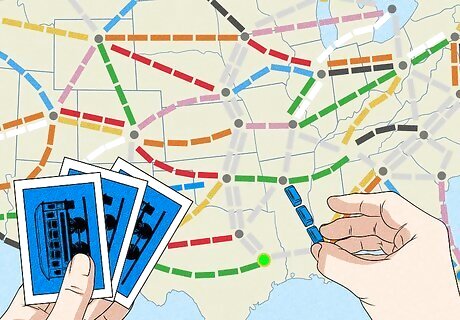
Claim a Route by playing a set of cards equal to the spaces in the Route. In order to claim a Route, you need to have a matching set of Train Car cards. The set also needs to have the same number of cards as there are spaces in the Route. If you have both of these requirements, you can choose to claim a Route and place your plastic train pieces in the spaces in the Route. Set the Train Car cards off to the side after you play them to claim a Route. Note: some cities are connected by double Routes. If you’re playing with 2 or 3 people, you can only claim 1 of the double Routes, and then the other one is closed.
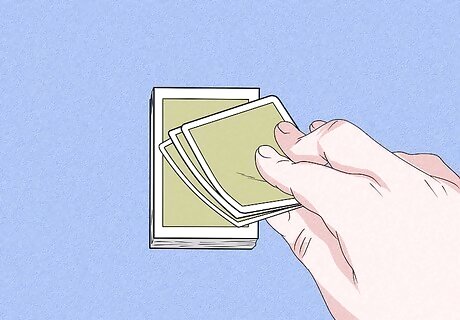
Draw 3 Destination Tickets and keep at least 1 of them. Another option is to draw Destination Tickets that you can use to connect 2 cities together to earn more points. Take 3 from the top of the deck of destination cards and take a look at them. You must keep at least 1, but you can also choose to keep all 3 if you like. Place the cards you don’t want back at the bottom of the deck. Keep in mind that any Destination Tickets that you fail to complete will be deducted from your score!
Objectives
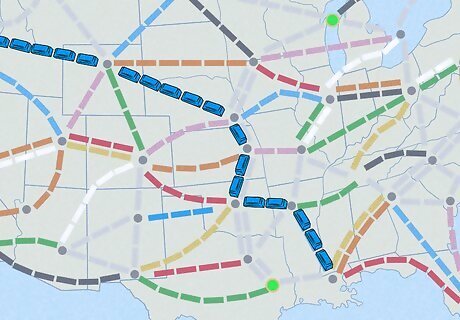
Score points by completing the 3 possible objectives. The object of Ticket to Ride is to score as many points as you can. Each objective you accomplish gives you a certain number of points, which you can then tally up at the end of the game for a final score. The 3 objectives are: Claim a Route between 2 adjacent cities Complete a Continuous Path of Routes between 2 cities listed on your Destination Tickets Complete the Longest Continuous Path of Routes
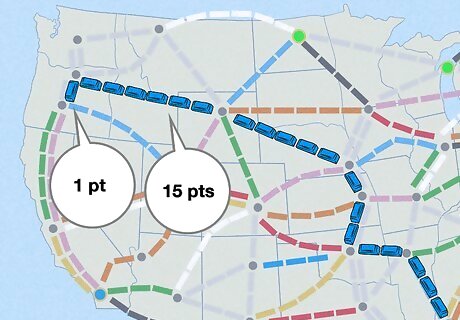
Claim a Route between 2 adjacent cities to earn points. Connect 2 cities together by claiming the Route and occupying the spaces with your plastic Train Cars. Each Route has a different number of points you earn for completing it. Check the Route Scoring Table to see how many points you’ve earned. For instance, a Route with 1 Train Car length earns 1 point, whereas a Route with 6 Train Cars earns 15 points. EXPERT TIP Ashton Wu Ashton Wu Board Game Expert Ashton Wu is a Board Game expert at Shelfside. After delving into the Yugioh tournament community while growing up, Ashton launched himself into the board gaming community in 2014 and went into reviewing board games as a career full-time in 2019. His YouTube channel Shelfside has over 35K subscribers and over 4 million views, assisted by written reviews on the Shelfside website and BoardGameGeek.com. He also consults with gaming companies to build high-quality gaming products. Ashton is a tournament commentator, board game playthrough director, and host of the Shelfside Podcast, where he talks about board games with his business partner, Daniel. He received a Bachelor of Arts in Economics at the University of California, Santa Barbara, in addition to the Technology Management Certificate. Ashton Wu Ashton Wu Board Game Expert Your strategic plan should focus on the long-term goal. Don't unnecessarily block your opponents early on, as doing so will leave you vulnerable and not offer many points. Instead, collect train cards patiently to build a larger pool of options. This will allow you to make a powerful late-game surge by claiming long routes.
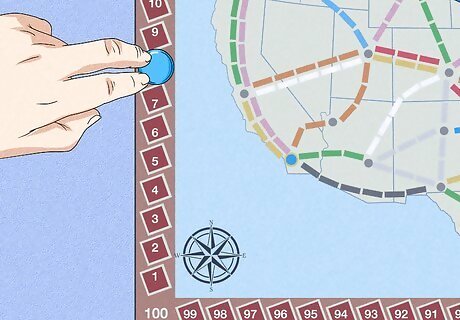
Move your scoring marker whenever you connect 2 cities. Whenever you claim a Route, add up the number of points it’s worth. Then, move your color marker along the side of the board map the number of points you’ve earned. This is a handy way to keep track of your points during the game.
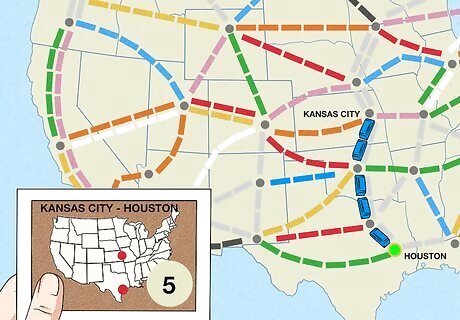
Connect 2 cities listed on your Destination Tickets. Look through your hand of Destination Tickets. Strategize ways to complete a continuous path between the cities to connect them and earn the points listed on the card. For example, if you have the “Los Angeles to New York” destination card, you can earn 21 points by connecting them with a continuous path. If your path is broken, you won’t earn the points for the destination card.
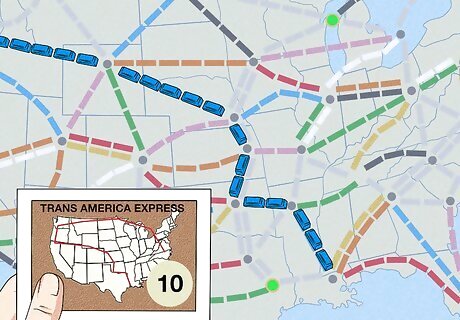
Complete the Longest Continuous Path to earn bonus points. As you work to claim Routes and connect cities on your Destination Tickets, try to construct the longest path of Routes as you can. The player with the longest unbroken Route will win the Longest Continuous Path card at the end of the gam and earn 10 bonus points.
Final Round

Start the final turn when 1 player gets down to 2 or fewer trains. Each player starts the game with 45 total Train Cars, but can use them in different ways. Whenever 1 player gets down to 0, 1, or 2 Train Cars after their turn, the next turn will be the final round. Even if the player has 0 Train Cars, they’ll still get to play 1 more round. They just won’t be able to claim any more Routes.
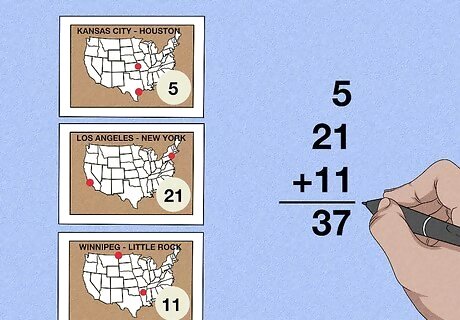
Reveal your Destination Tickets and calculate their values. When the game is finished, each player turns over their destination cards. For each completed card, add the points to your total score. If you failed to connect the cities, then the points are subtracted from your total. For instance, if you fail to connect your “New Orleans to Omaha” Destination Ticket, you’d have to subtract the 5 points from your total score.
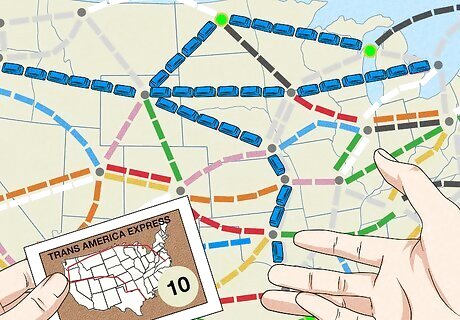
Give the player with the Longest Continuous Path the bonus card. Count the number of Train Cars in an unbroken path to find out which one is the longest. Award that player the Longest Continuous Path card, which adds 10 bonus points to their score. If there’s a tie, then both players get 10 bonus points.
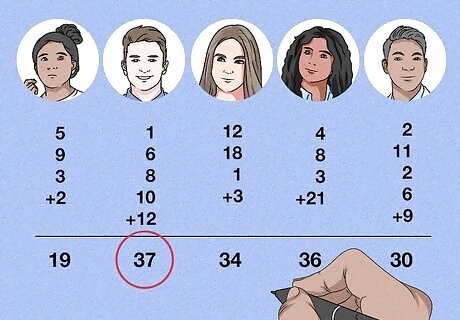
Add together each player’s points to determine a winner. Tally up each of the player’s points including destination cards and any bonus points. Whoever has the highest score wins the game! If there’s a tie, the player that completed the most Destination Tickets is the winner. If there’s still a tie, then the player with the longest continuous path wins.



















Comments
0 comment